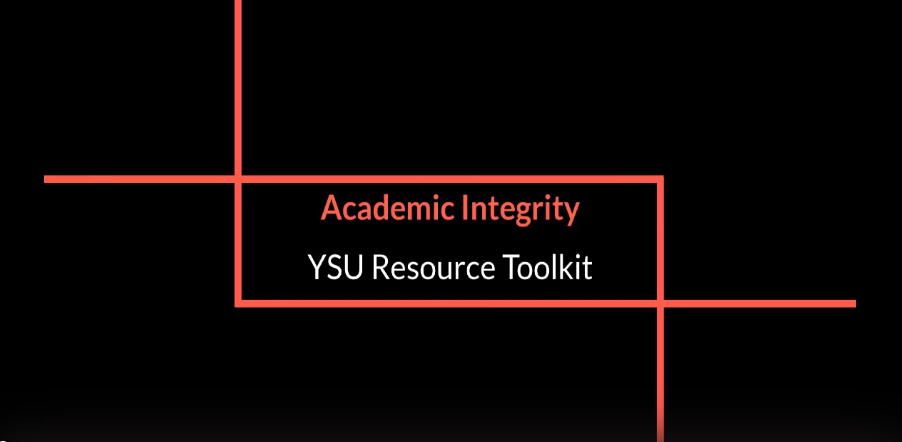-
-
Colleges
-
-
Student Experience Greek Life Housing & Dining Health & Recreation Our Campus Community Engagement Athletics
-
I want my STUDENTS TO MAINTAIN ACADEMIC INTEGRITY.

Click on the image above to view the video!
This video is a walkthrough of the strategies, technology, and resources found on this outcome webpage. It was recorded during the summer Resource Toolkit Workshop Series (July 2020). You can access the video using your YSU credentials. Please contact atkaufman@ysu.edu if you are unable to access the video.
Academic integrity involves a variety of unethical behaviors, all of which must be taken seriously. We are introducing you to three different approaches for dealing with academic integrity in your courses. These approaches do not need to be discrete and you may find tips from each of them that will work in your courses. Information from this section is adapted from, Cheating Reduction Strategies (Wa-Mbaleka, 2013).
-
-
Virtue Integration
-
Prevention
-
Policing
-
- Virtue Integration
From the beginning of your course, encourage your students to strive for academic excellence and integrity. This approach has impact on students long after your course ends, and promotes self-motivation. This approach may be difficult because it depends on student cooperation, and may take extra time and effort.
Some good practices that align with this approach:
- Design assignments that focus on higher-order thinking skills
- Talk about the relation of academic integrity to professional ethics and careers
- Add an electronically signed statement that certifies the originality of work
- Be sure your assignments are manageable
- Prevention
In this approach, you are focusing on limiting opportunities for students to cheat. Like the virtue integration approach, this approach may require spending more time in your assignment and assessment design. This approach however can empower students, foster faculty-student relationships, and promote learning.
It is important is this approach to make your students aware of the Student Code of Conduct, particularly Article 3 and Article 5. You may consider quizzing students on these policies or making them sign a conduct pledge.
The most critical component to this approach is how you design your assignments and assessments. Here are some tips for doing this effectively:
- Change your assignments/exams routinely
- Create assignments that require connection to real-world/personalized examples
- Require drafts or steps for writing assignments
- Include statements about academic integrity on the top of assignments/exams
- Use different versions of the same assessment
- Create make-up exams that are perceived to be harder than the original
- Use question pools (Blackboard Ultra Tutorial; Blackboard Original Tutorial)
- Use Blackboard Safe Assign for written assignments (Blackboard Ultra Tutorial; Blackboard Original Tutorial)
- Policing
This approach focuses on catching and punishing students who practice academic dishonesty. This approach gives you the most control/power, but that may have a negative impact on the relationship you have with your students, and does little to empower students or teach them the value of academic integrity.
Here are some good practices for the policing approach:
- Maintain test security
- Set a limited time for each question or for the test
- Set test to present questions/multiple choice answers randomly
- Report all cheating
For high-stakes online exams, you may consider using test proctoring software. YSU partners with Examity and Respondus to provide support for automated test proctoring. Respondus is the preferred tool for Fall 2020. However, students using Google Chromebooks will not be able to use Respondus. Note: Do not use special characters in the title of an exam on Respondus. It will cause the exam to crash for Mac users.
- Respondus offers two different test proctoring options, Monitor and LockDown. LockDown is available for use in Blackboard Ultra (PDF Tutorial) and Blackboard Original (PDF Tutorial).
- Register for a free Respondus Instructor Training Webinar
- If administering a proctored test through Examity in Blackboard, share this test-taker guide with your students.
Further Reading on Academic Integrity:
- By Popular Request...Academic Integrity (Center for Teaching, Learning, and Assessment)
- The Online Administrator's Semi-Painless Guide to Institution-Wide Academic Integrity (Tobin, 2017)
- Cheating Reduction Strategies (Wa-Mbaleka, 2013)
